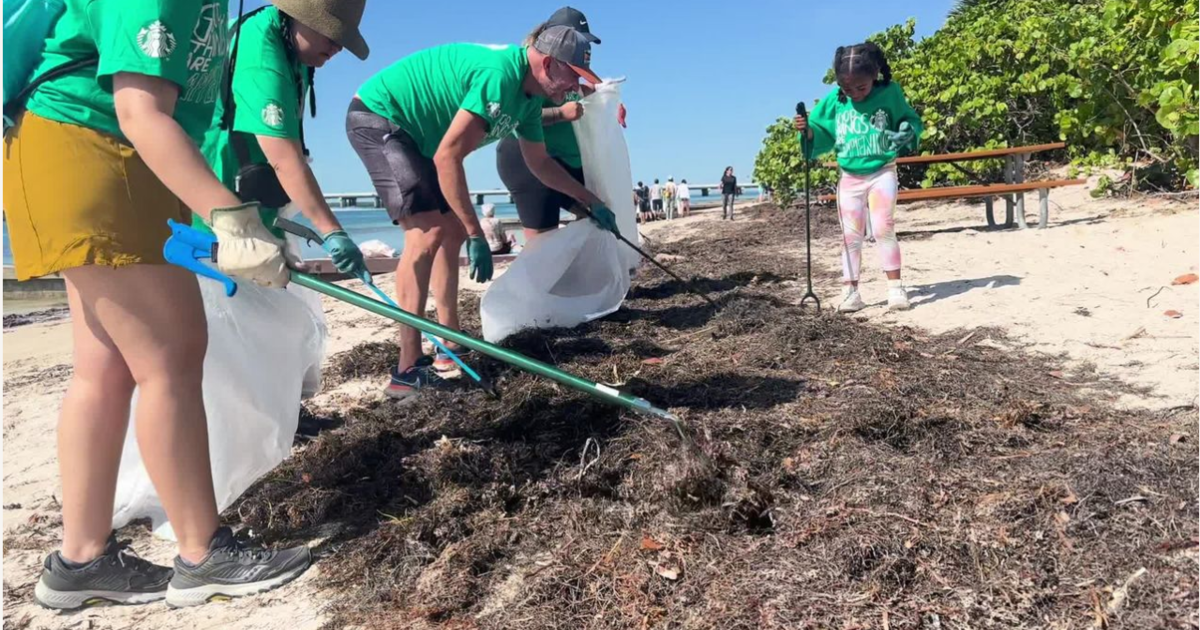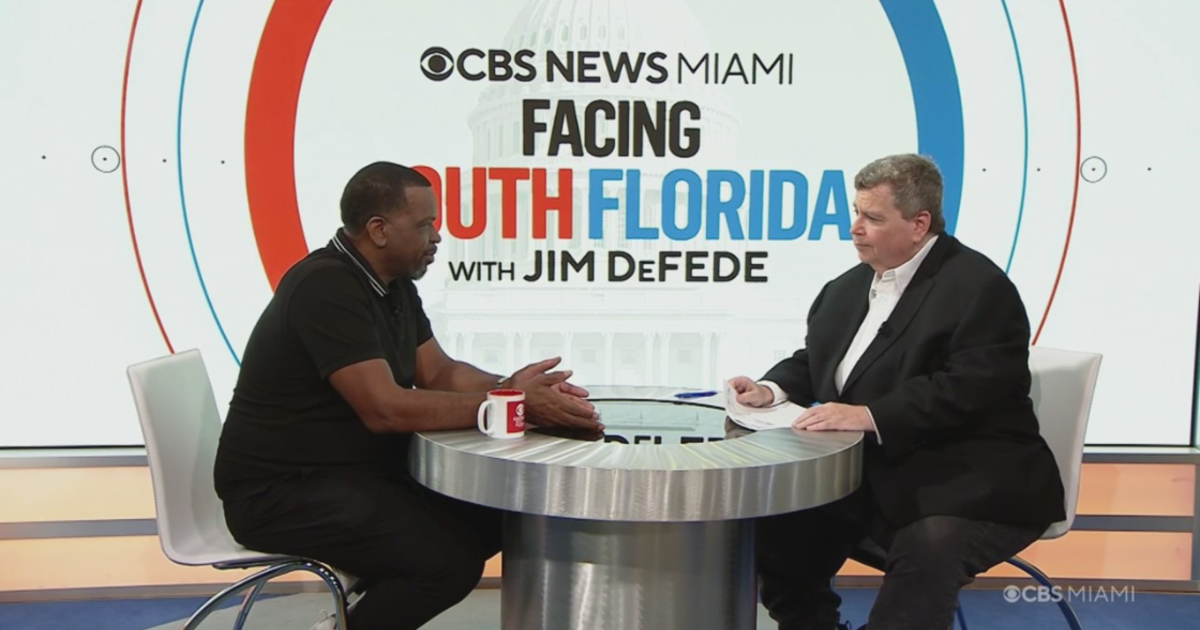Keeping The Coast Clean
(Courtesy: Miami-Dade Parks)
By Yasenny Camejo
The average person throws away five pounds of garbage each day, about one quarter of which is non-biodegradable. Imagine what it would look like if you didn't remove trash from your home every day or the garbage pickup didn't arrive to your neighborhood twice a week? What would your house, neighborhood and environment look like? It would all be filthy and unhealthy.
Now imagine what Miami-Dade's beaches and shorelines would look like if they didn't get cleaned up every day after being enjoyed by thousands of beachgoers. "Yuck" doesn't begin to cover it. But thankfully, our beaches are under the excellent care of Miami-Dade Parks' Beach Maintenance Unit, which conserves and preserves one of our region's largest and most prized resources.
At dawn every day, the Parks Beach Maintenance crew is out shifting and cleaning around 14 miles of beach, basically everything east of the dunes to the shoreline, from Government Cut up to Golden Beach.
The Cleaning Routine
On any given day there is a crew of 25 people working to keep the beach clean. The crew is tasked with pick sticking liter, emptying trashcans and grooming the beach with tractors. "My crew gets up between 3:45 a.m. and 4 a.m. to arrive on the beach by 5:30 a.m.," explains Andrew Cendan, Beach Operations Coordinator.
Cleaning the beaches is a 365-day-a-year job and is only modified during sea turtle nesting season. From March through the end of October, surveyors from the Parks' Sea Turtle and Resiliency Program begin their morning half an hour before sunrise looking for nests with sea turtle eggs, and later in the season looking for hatchlings. "Once the Turtle Surveyors have cleared the beach we can begin our job for the day," says Cendan. Ground crews are dropped off at different locations along the 14 miles of beach to pick up litter. Operators drive a tractor with a blade to roll seaweed so beachgoers do not have to walk through the seaweed. Other operators drive a tractor with a sifter that will pick up micro debris from just under the beach surface. Micro debris refers to cigarette butts, bottle caps, shells, glass and more.
"This year has been especially difficult with Hurricane Irma and now the king tides. Both have affected the beach in different ways. Irma brought in around two feet of sand and seaweed and blanketed it over the entire 14-mile stretch. It also has been depositing a lot of debris, from buckets to trees to lobster pots. The king tides have also brought in an enormous amount of seaweed. Our operators and ground crews have been working endlessly using bulldozers, tractors, sifters and their hands to get the beach back to what patrons are used too," said Steve Sider, Acting Beach Maintenance and Operations Supervisor.
King tide is the non-scientific name given to an exceptionally high tide, typically occurring during the full or new moon cycle from September through November. October tides are usually the highest of the year. Sea level rise paired with king tides create a more complicated and widespread beach erosion. It becomes more of an issue to the population because the tides also penetrate the porous limestone that introduces salt water through our drainage systems and enters our freshwater aquifers.
Ocean trash ranks as one of the most serious pollution problems of our time. Much more than an eyesore, trash in the water and on the shore affects the health of people, wildlife and the economy. Trash in the water injures swimmers and beachgoers, harms wildlife that eats it or gets trapped in it, drives away tourists — and their wallets — and even ensnares boat propellers, creating a costly navigation hazard.
Step Up for the Shoreline
While beach crews do the heavy lifting, there are many ways for the rest of us to help. Every third Saturday, Crandon Park Beach hosts a beach cleanup. Call the Crandon Nature Center at 305-361-6767 for details. Last year, more than 900 volunteers took to the sand to pick up trash, which translates to 2,586 volunteer hours. Every April, Miami-Dade County's Regulatory and Economic Resources Department hosts Baynanza, where thousands of volunteers help clean up hundreds of thousands of pounds of trash along Biscayne Bay.
And each September, Miami Dade Parks organizes the International Coastal Cleanup, the world's largest volunteer beach and waterways clean up. The department also publicizes data that helps the public and global science community more clearly understand the problem of ocean trash with a goal of building a movement that inspires all of us to stop trash before it starts and live cleaner, healthier lives.
Quick Changes to Keep Beaches Clean
This July, the department banned the use of polystyrene (Styrofoam), which is considered the nation's fifth largest creator of hazardous waste and a material that poses major issues to land and water. With so much trash and litter entering our ocean every year, the problem of preventing and reducing marine debris is an urgent issue we must address to preserve the health of the ocean. Click here to learn more.
By getting involved in cleanups, encouraging others to keep the beaches and oceans clean and the efforts of Miami-Dade Parks cleanup crews, we can help make the water cleaner and safer. Here are some other changes you can make in your daily routine to keep beaches clean:
- Bring your own reusable cup, but don't use Styrofoam. Every year, 25 billion Styrofoam coffee cups are thrown away. For that reason, Miami-Dade County has banned Styrofoam from its beaches.
- Avoid products with excess packaging.
- Invest in a reusable water bottle instead of single-use plastic bottles.
- Bring a reusable bag to all stores to reduce use of paper and plastic bags.
- Clean up your area after your trip to the beach.
- After a hurricane or tropical storm, help environmental authorities clean up marine debris.
- Volunteer for eco-action days — look out for the next Baynanza!
The Problem With Plastics
- Sea turtles and other marine creatures mistake plastics and other garbage as food (such as jellyfish) and ingest it. This mistake causes blockages within their digestive system and their eventual deaths.
- According to the U.S. Environmental Protection Agency, Americans use more than 380 billion plastic bags and wraps each year. Plastic bags are petroleum-based and do not biodegrade. It takes 12 million barrels of oil to produce this many bags. Worldwide, as many as one trillion plastic bags are used each year. This equates to 100 million barrels of oil.
- In 2007, San Francisco was the first city in the United States to ban petroleum-based plastic bags in large markets and pharmacies.
- Plastic toxins end up in fish, which end up on our plates, which end up inside our bodies.
- Less than 5 percent of plastics are recycled worldwide.
More Articles From Miami-Dade Parks
Above content provided by Parks-Foundation of Miami-Dade and Miami-Dade Parks & Recreation



